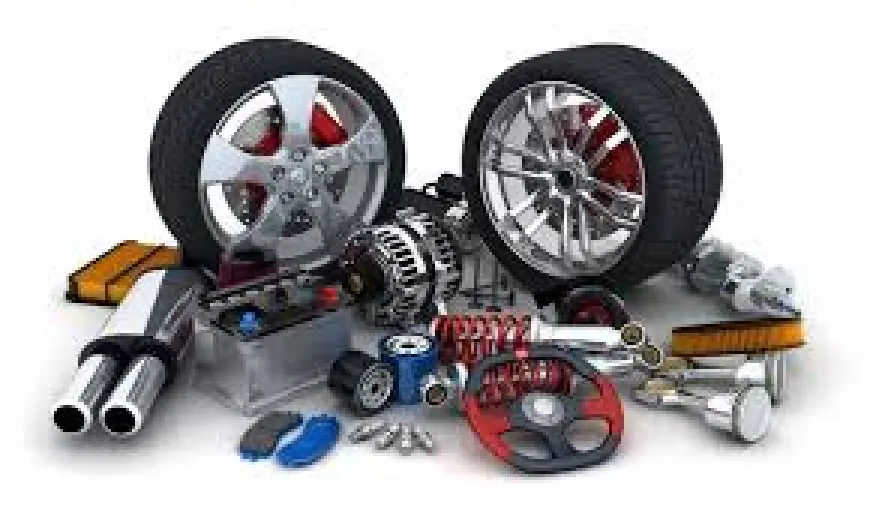Saudi Arabia Automotive Components Market 2030 Research
Environmental sustainability and the global shift toward electric mobility are also beginning to influence the market, with early investments in electric vehicle (EV) infrastructure and green mobility initiatives.

The Saudi Arabia Automotive Components Market is entering a dynamic phase of growth, backed by government-led initiatives under Vision 2030, increased demand for mobility solutions, and transformative industrial policies. Valued at USD 6.51 billion in 2024, the market is projected to reach USD 10.24 billion by 2030, growing at a CAGR of 7.8%. This expansion signifies a fundamental shift from an import-dependent sector to one increasingly rooted in domestic innovation, quality servicing, and technology integration.
Emerging Trends in the Saudi Automotive Components Market
1. Localization of Manufacturing
Driven by Vision 2030, Saudi Arabia is actively working to localize automotive component manufacturing. The government is promoting partnerships with global Tier-1 and Tier-2 suppliers to build domestic production capabilities. Joint ventures and technology transfer agreements are becoming more prevalent, paving the way for in-Kingdom production of drivetrain, suspension, electrical, and chassis parts.
2. Digital Transformation in Aftermarket Services
Digitally enabled workshops and diagnostics platforms are gaining traction. Vehicle owners increasingly turn to online platforms to source auto parts, book servicing appointments, and track vehicle health. This shift is opening new revenue streams, reducing operational inefficiencies, and providing consumers with convenience and transparency.
3. Sustainable and Lightweight Components
With the rise of electric and hybrid vehicles, manufacturers are developing lighter, energy-efficient, and modular components. Materials like aluminum alloys, composites, and thermoplastics are being utilized to reduce weight and improve fuel economy. Emphasis is also placed on recyclable components and reduced carbon footprints.
4. Rise of Preventive Maintenance Culture
Consumer awareness regarding preventive maintenance is rising. Rather than waiting for breakdowns, vehicle owners are investing in scheduled maintenance, leading to greater demand for quality aftermarket parts such as filters, lubricants, brake pads, and battery systems.
5. E-commerce and Online Auto Parts Distribution
E-commerce is rapidly changing the landscape of component distribution. Online platforms specializing in spare parts are enabling wider product availability, price transparency, and doorstep delivery, especially in semi-urban areas.
Download Free Sample Report: https://www.techsciresearch.com/sample-report.aspx?cid=13014
Key Market Drivers
1. Vision 2030 and Economic Diversification
Vision 2030 is a catalyst for industrial growth in Saudi Arabia. The automotive component industry is prioritized under this initiative to reduce import dependency and develop local manufacturing capacity. Financial incentives, policy support, and infrastructure investments are attracting global suppliers to set up local operations.
2. Growth in Commercial Vehicle Segment
Commercial vehicles, especially those used in logistics, public transport, and construction, are driving demand for high-durability replacement parts. These vehicles undergo frequent servicing due to heavy usage, pushing growth in the replacement market for components such as suspensions, engine assemblies, and drivetrain systems.
3. Urbanization and Infrastructure Development
As cities expand, and mega projects like NEOM and Jeddah Central Project progress, the demand for passenger and commercial vehicles increases. This leads to higher vehicle density and consequently boosts demand for automotive servicing and parts.
4. Technological Advancements in Vehicle Systems
Modern vehicles are increasingly equipped with advanced driver assistance systems (ADAS), infotainment electronics, and emission control technologies. As a result, the market is witnessing increased demand for sophisticated electrical components and precision-engineered parts.
5. Regional Integration and Trade Cooperation
Saudi Arabia's active trade relations within the GCC are enhancing component availability and streamlining supply chains. Cross-border collaborations and harmonization of standards enable faster sourcing, efficient logistics, and consistent quality.
Industry Key Highlights
- Market Valuation: USD 6.51 billion in 2024, projected to reach USD 10.24 billion by 2030.
- CAGR: 7.8% during the forecast period.
- Growth Segments: Commercial vehicle components, aftermarket services, and electrical systems.
- Technology Integration: Rising adoption of AI diagnostics, IoT-enabled servicing, and blockchain for parts traceability.
- Investment Trends: Surge in joint ventures and technology collaborations with global OEMs.
- Policy Backing: Strong support from Saudi government under Vision 2030 for industrialization.
Competitive Analysis
The Saudi Arabia automotive components market is characterized by the presence of global giants and emerging local players. Key strategies include mergers, acquisitions, regional collaborations, and R&D investments.
1. Robert Bosch GmbH – Known for its innovation in automotive electronics and engine components. Bosch is expanding its presence in the Middle East through distribution partnerships.
2. DENSO Corporation – Focused on electric powertrains and thermal systems. DENSO is exploring manufacturing alliances in the GCC region.
3. ZF Friedrichshafen AG – A leader in driveline and chassis technology, ZF is aligning with regional distributors to expand footprint.
4. Magna International Inc. – Engaged in producing body, chassis, and powertrain components with modular architecture compatible with EVs.
5. Hyundai Mobis – Specializing in electrical components and braking systems, Hyundai Mobis is increasing its aftermarket presence in Saudi Arabia.
6. Valeo, Faurecia, Lear Corporation – These firms offer a range of comfort, safety, and energy efficiency components and are actively engaging in supplier partnerships within Saudi Arabia.
The competitive dynamics also involve emerging local assemblers and part manufacturers who are forming technical tie-ups with global OEMs to boost domestic capabilities.
Regional Focus: Western Region Leads Growth
The Western region—comprising Jeddah, Mecca, and Medina—is the fastest-growing in terms of component demand. Key factors include:
- High vehicle turnover due to religious tourism (Umrah and Hajj).
- Large taxi and ride-share fleets requiring frequent servicing.
- Ongoing infrastructure modernization projects.
Vehicle components like brake pads, filters, AC units, and electrical parts are in particularly high demand. Port facilities in Jeddah also support efficient distribution and supply chain operations.
Future Outlook
The future of the Saudi automotive components market appears highly promising. With a strategic shift towards domestic production, the Kingdom is poised to become a regional hub for automotive parts manufacturing. The combination of foreign investment, government backing, and skilled workforce development will drive the next growth wave.
Key expected developments:
- Establishment of local assembly lines for high-demand parts.
- Emergence of component clusters with shared logistics and R&D infrastructure.
- Increased penetration of electric vehicle components.
- Digital service platforms revolutionizing the aftermarket experience.
- Enhanced export potential to GCC and MENA regions.
However, successful realization of this potential depends on resolving challenges such as skill shortages, counterfeit products, and standardization gaps.
10 Benefits of the Research Report
- In-depth Market Forecast: Accurate projections up to 2030.
- Segment-Level Analysis: Insights by vehicle type, component, and demand category.
- Competitive Intelligence: Detailed profiling of key players.
- Regional Analysis: Focused outlook on high-growth areas.
- Trend Identification: Coverage of key technological and behavioral shifts.
- Policy Insights: Understanding the role of Vision 2030 in market growth.
- Supply Chain Overview: Evaluation of sourcing and distribution channels.
- Investment Opportunities: Identifying high-return segments.
- Risk Assessment: Coverage of market constraints and mitigation strategies.
- Customization Options: Tailored insights for specific stakeholder needs.
Conclusion
Saudi Arabia's automotive components market stands on the cusp of transformation, driven by visionary government policies, rapid urban growth, and evolving consumer expectations. As the Kingdom works toward reducing import dependency and boosting domestic manufacturing, the sector is expected to witness a surge in investments, innovations, and strategic partnerships. By addressing structural challenges and embracing digitalization, the market can secure a leading position in the regional automotive landscape. With its steady growth trajectory and government backing, the Saudi automotive components market will play a vital role in the country's industrial future and economic diversification journey through 2030 and beyond.
Contact Us-
Mr. Ken Mathews
708 Third Avenue,
Manhattan, NY,
New York – 10017
Tel: +1-646-360-1656
Email: [email protected]
Website: www.techsciresearch.com
What's Your Reaction?
 Like
0
Like
0
 Dislike
0
Dislike
0
 Love
0
Love
0
 Funny
0
Funny
0
 Angry
0
Angry
0
 Sad
0
Sad
0
 Wow
0
Wow
0


















































